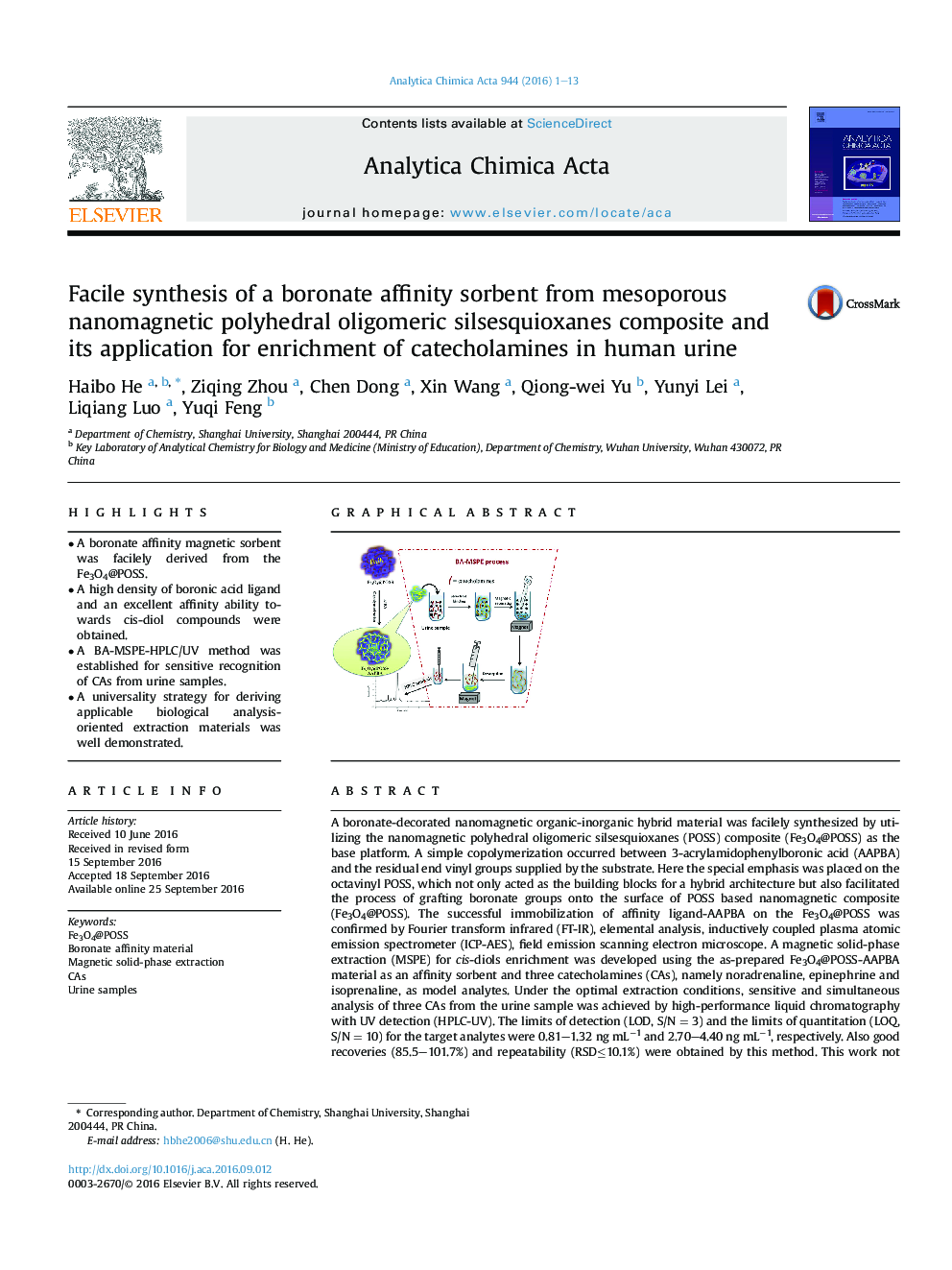| Article ID | Journal | Published Year | Pages | File Type |
|---|---|---|---|---|
| 5131411 | Analytica Chimica Acta | 2016 | 13 Pages |
•A boronate affinity magnetic sorbent was facilely derived from the Fe3O4@POSS.•A high density of boronic acid ligand and an excellent affinity ability towards cis-diol compounds were obtained.•A BA-MSPE-HPLC/UV method was established for sensitive recognition of CAs from urine samples.•A universality strategy for deriving applicable biological analysis-oriented extraction materials was well demonstrated.
A boronate-decorated nanomagnetic organic-inorganic hybrid material was facilely synthesized by utilizing the nanomagnetic polyhedral oligomeric silsesquioxanes (POSS) composite (Fe3O4@POSS) as the base platform. A simple copolymerization occurred between 3-acrylamidophenylboronic acid (AAPBA) and the residual end vinyl groups supplied by the substrate. Here the special emphasis was placed on the octavinyl POSS, which not only acted as the building blocks for a hybrid architecture but also facilitated the process of grafting boronate groups onto the surface of POSS based nanomagnetic composite (Fe3O4@POSS). The successful immobilization of affinity ligand-AAPBA on the Fe3O4@POSS was confirmed by Fourier transform infrared (FT-IR), elemental analysis, inductively coupled plasma atomic emission spectrometer (ICP-AES), field emission scanning electron microscope. A magnetic solid-phase extraction (MSPE) for cis-diols enrichment was developed using the as-prepared Fe3O4@POSS-AAPBA material as an affinity sorbent and three catecholamines (CAs), namely noradrenaline, epinephrine and isoprenaline, as model analytes. Under the optimal extraction conditions, sensitive and simultaneous analysis of three CAs from the urine sample was achieved by high-performance liquid chromatography with UV detection (HPLC-UV). The limits of detection (LOD, S/N = 3) and the limits of quantitation (LOQ, S/N = 10) for the target analytes were 0.81–1.32 ng mL−1 and 2.70–4.40 ng mL−1, respectively. Also good recoveries (85.5–101.7%) and repeatability (RSD≤10.1%) were obtained by this method. This work not only showed a facility for the utilization of Fe3O4@POSS as a substrate for constructing a boronate functionalized nanomagnetic sorbent, but also demonstrated the capability of the derived material for recognition of trace amount of cis-diols biomolecules presented in complicated biological matrices.
Graphical abstractFigure optionsDownload full-size imageDownload high-quality image (212 K)Download as PowerPoint slide
